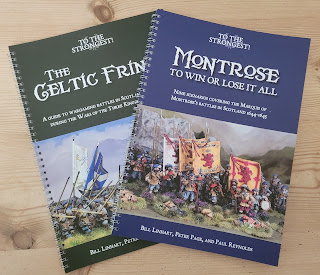Spies!
As is becoming traditional on International Women's Day we take a look at the part that women played during the Wars. This year, the KeepYourPowderDry spotlight shines upon the many spies of the Civil Wars.
Many of the spies that we know about were women and servants, as they were 'invisible'. One only has to think of how Charles II, a man of distinctive complexion and height, became 'invisible' by becoming the man servant of Jane Lane when fleeing from Worcester.
Our first spy is Elizabeth Alkin, Elizabeth, nicknamed Parliament Joan, (c. 1600–1655?). She was the wife of Francis Alkin, who was hanged as a spy in Oxford by royalist forces. Alkin's activities are known largely from her surviving petitions for payment and relief and from references in contemporary newsbooks.
Employed from the beginning of the civil war as a spy by the Earl of Essex, Sir William Waller, and Thomas Fairfax, in 1645 and 1647 Alkin received payments from the committee for the advancement of money for several 'discoveries', including information about the activities of George Mynnes, a Surrey ironmaster who was supplying royalist forces with iron and wire.
She appears to have spent much effort in tracking down the London based Royalist press, which inevitably earned her many, often derogatory, references. In February 1649 Mercurius Pragmaticus called her an 'old Bitch' who could 'smell out a Loyall-hearted man as soon as the best Blood-hound in the Army' . She appears in A Perfect Diurnall (2–9 July 1649) as 'One Jone (a clamerous woman) whose husband was hang'd at Oxford for a spie, & she sometimes imployed in finding out the presses of scandalous pamphlets'.
In June 1649 Alkin was sent to 'the house of correction' for 'great incivilities' to Sir James Harrington MP, and the following month was involved in a fracas in the Salutation tavern in Holborn with some soldiers who apparently suspected her of being a Royalist. A dispute in the same year over her occupation of the house of Stephen Fosett, surgeon to Sir Arthur Aston (governor of Oxford during the first war and responsible, she claimed, for her husband's death), resulted in a grant of £50 and a house.
During 1650-1 she was involved in printing a number of pamphlets, many adopting titles previously borne by Royalist papers.
During the First Anglo-Dutch War (1652–4) Alkin pursued new ways in which to serve the state. On 22 February 1653 she petitioned for a position as nurse to maimed seamen in Dover. By 1655 she was destitute, and terminally ill.
Jane Whorwood was born to a family of Scots gentry that had travelled south after James I's ascension to the English throne in 1603. Her father, William Ryder, was overseer of the Royal Mews, and her mother Elizabeth, the queen’s laundry woman, an important and prestigious position. On William's death her mother remarried James Maxwell; a confidante to Prince Charles, and Black Rod. Ryder would act as pawnbroker and money lender to Charles before the outbreak of the Wars.
At the outbreak of the Civil War, Jane's husband Brome Whorwood, fled to the continent, leaving his family behind. Jane would utilise her parents' contacts to array a vast smuggling and spying network for the Crown.
Her operation was incredibly successful at funnelling funds from London’s merchants through back channels to Charles. Gold was secreted in deliveries of soap to Oxford, hidden in barrels sent up the Thames every week. Jane regularly used this method, on one occasion managing to transport 1,705 lbs of gold to Oxford.
Upon the capture of Charles, Jane remained loyal to the crown plotting to rescue the King. It is during his incarceration that Dr Sarah Poynting argues that Jane became Charles's 'favourite'.
Meanwhile, Jane’s efforts to rescue the King came to nothing. She managed to get metal files and 'aqua fortis' (nitric acid) to the King in Carisbrooke Castle to break his barred windows, and she acquired a ship to carry him to the continent.
Charles failed to escape from Carisbroke: his attempts descended into farce as he got stuck in the window at his first attempt, and then broadcast his intentions at a second attempt so widely that he was betrayed. Jane herself was arrested and imprisoned briefly in 1651, but fined and released in the early days of reconciliation of the Commonwealth. She would die, aged 72, and was buried in an unmarked grave at St Bartholomew's Church, Holton.
Next up is Elizabeth Maitland, Duchess of Lauderdale. Elizabeth became acquainted with Oliver Cromwell, probably when his army headquarters were located in Kingston-upon-Thames in the summer of 1647. The connection provided a smoke screen for her loyalty to the Crown. She used the friendship to successfully plead for the life of John Maitland, the royalist Earl of Lauderdale, after his capture at the Battle of Worcester. From 1653, she was affiliated with the Sealed Knot (the Royalist secret society, not the re-enactment group) She was in correspondence with exiled supporters of Charles II and visited Europe often to convey letters to the King. despite being frequently pregnant and under the close scrutiny of the Protectorate. She developed an invisible ink for this correspondence.Upon the Restoration of the monarchy Charles II rewarded Elizabeth with an annual pension of £800, for her spying activities.
 |
| Image from Irregular Miniatures' site |
A perfect spy figure, if you use By The Sword Divided as your benchmark. But alas Irregular's 15mm figures would tower over my 'true 15mm' figures. A lot more sleuthing for a suitable figure led me to the Lord of The Rings version of Risk. The Nazgul game pieces are a good enough stand in until I can find something more appropriate.












Great idea, I can already think of lots of uses in campaigns!!
ReplyDeleteThanks, there's lots of potential isn't there?
DeleteExcellent. As ever.
ReplyDeleteThanks Dex
DeleteVery interesting - thank you
ReplyDeleteYou are welcome
Delete